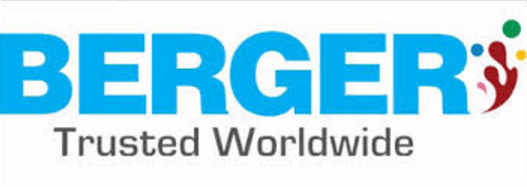Berger Paints Pakistan – IT Report
Berger Paints Pakistan – IT Report
OFFICE AUTOMATION AT BERGER
“ The concept of office automation is broad and multifaceted. It consists of multiple technologies ( data, text, voice and image ) supporting a broad spectrum of applications ( e.g. data processing, word processing, telecommunications networks ) that can augment human and mental processes.”
This text book definition is quite accurate in defining office automation even today. The office automation studied at Berger has the same role. The only difference is that at Berger the concept of office automation is explained more on the lines of Management Information Systems. The department dealing with office automation is called the MIS department. The primary objective of the program is to reduce paper work and improve efficiency. The secondary objective is to help the management in the decision making process.
DEVELOPMENT
Office automation is a very old concept at Berger. The use of data and voice transfer machines was started at the very beginning . The current system that is being implemented has been developed by Berger India. This decision was taken by the previous parent company Berger England. At that time all the Berger subsidiaries had a unified data base. The system was initiated in ‘88-’89. The system was refined at Pakistan. Berger Pakistan made some changes in the original system to accommodate the local differences. The company still maintains technical liaison with Berger India.
IMPLEMENTATION
The office automation system was first installed in the accounting department. The basis of today’s internal finance is the voucher. It was therefore natural for Berger to start OA with the automation of the voucher system. This resulted in identifying costs easily and accurately. Which helps identify the weak sectors which are in need of improvement. This was followed by the total automation of the accounting department. The next department to be automated was the sales department. The initial step was to generate computer invoices. This helps by identifying the dues and advances of the customers, see the stock position and compare the sales of different divisions. The greatest advantage is the timely availability of information. The data base of the two departments is unified. This helps the decision making process. Automation is being implemented in the other departments at a slower rate.
At Berger automation is not a one step process. The OA of any department starts with minor changes. In the beginning the work is performed both manually and mechanically. This is done in order to check the system in the practical environment. Any difference between the two systems is identified and then removed. A period of six months is given for the conversion of one aspect of the department from manual to automation.
Security is a very real concern for any organization. The current system has pre installed safeguards against the misuse of information. Safety checks are also present for identifying frauds.
Presently Berger has UNIX Release 3.2 (UNIX 5). As a policy all the executives have a personal computer in their offices. Berger has Integrated Systems Research (ISR) as their consultants in the implementation of the new system. Minor problems are solved by the MIS department.
EXPANSION
The aim of the OA program being implemented at Berger is to automate all the departments. Currently the marketing and personnel departments are being automated. A strange decision is to automate the administrative department in the end. A unified data base is to be constructed for the company.
The final step of the program is to give the executives on-line access to the company data base. This will help the different departments in working as a team. This is the basic concept behind the treatment of office as a system.
EFFECTS
The office employees at Berger feel at ease with the computer. The partial OA has had visible effects on the efficiency and effectiveness of the concerned departments. There has been a reduction in the overtime at the accounting department. This has positive effects on the company’s balance sheet. Another aspect of the company policy is that no new employees are hired for using the machines. The company trains and develops the existing employees for using the new machines.
ANALYSIS
After closely studying office automation and its implementation at Berger, we identified the company to be at the expansion stage of the transitional phase. Here we give a step by step analysis of this observation with reference to the outline studied in the course.
The technology usage is simple and fragmented. Different activities of different departments are being mixed with manual work. The departments are being automated on a step by step basis. The computerization of different activities is being done independently e.g. the computerization of the invoice system was started before the complete computerization of the voucher system. This is being done with the objective of coordinating the different activities after total computerization. The aim of creating a unified data base is a step in that direction.
The management is faced with rising costs relating to automation. This is, however, being treated as an investment for reducing future costs. The users are dependent on the use of technology where it has been installed and implemented. The focus of attention of the management is on the effective usage of the OA program by the employees. This is visible by the training programs being implemented by the management for the employees. The management has a relaxed attitude towards the employees in the learning stages.
One characteristic of this stage which was not present in Berger was the power struggle between the MIS and administrative departments. Although the personnel manager was quick to point out that his department was the last to be computerized, there was no indication of resentment.
The storage of data has started to take place as computer files. This measure, however, is still transitional. Manual files are also being created as a safeguard. This ,however, will not last long.
The benefits desired by Berger are both cost-displacement and value-added. The primary objective of reducing paper work will result in higher efficiency and hence the benefit would be cost-displacement. The secondary objective of facilitating the management in decision making is a value-added benefit. The aim of the company is to achieve both the objectives after the complete implementation of the system.
CONCLUSION
After observing the practical world and comparing it with the theory studied in the course we believe that the concepts explained in the book are very much valid. We analyzed Berger on the characteristics of different stages and phases of OA mentioned in the book.
Berger has a very well defined objective for OA. The company is implementing the OA program in a gradual manner. The concerns of the employees for the OA program are being given due consideration. All these factors will result in proper implementation and running of the OA program.













